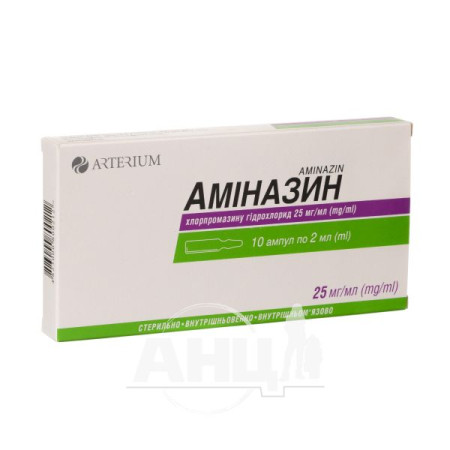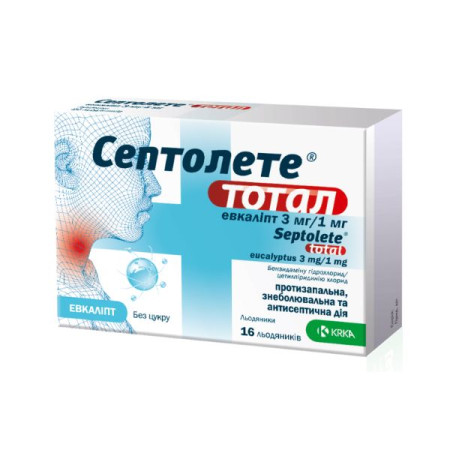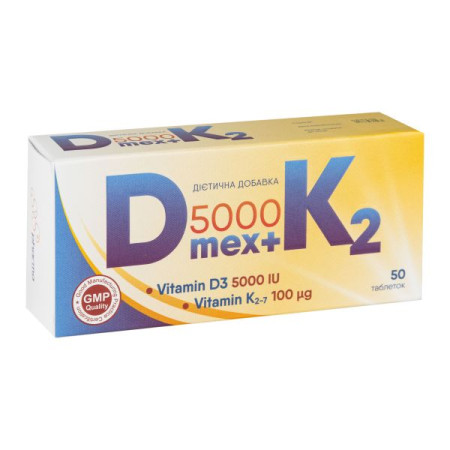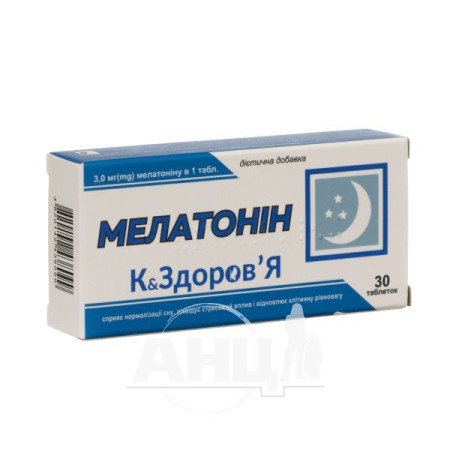Torsid solution for injection 5 mg/ml ampoule 4 ml No. 5

Instructions Torsid solution for injection 5 mg/ml ampoule 4 ml No. 5
Composition
active ingredient: torasemide;
1 ml of solution contains torasemide, calculated as 100% dry matter, 5 mg;
Excipients: polyethylene glycol 400, tromethamine, sodium hydroxide, water for injections.
Dosage form
Solution for injection.
Main physicochemical properties: transparent colorless liquid with practically no mechanical inclusions.
Pharmacotherapeutic group
Diuretics. Highly active diuretics. Simple sulfonamide preparations. ATX code C03C A04.
Pharmacological properties
Pharmacodynamics
Torasemide acts as a saluretic, the action is associated with the inhibition of renal absorption of sodium and chlorine ions in the ascending part of the loop of Henle. In humans, the diuretic effect quickly reaches its maximum within the first 2-3 hours after intravenous administration and remains constant for almost 12 hours. In healthy probands, an increase in diuresis proportional to the logarithm of the dose was observed in the dose range of 5-100 mg. An increase in diuresis was observed even in cases where other diuretics, for example, distally acting effective thiazide diuretics, no longer had the desired effect, in particular in renal failure. Due to this mechanism of action, torasemide leads to a decrease in edema. In heart failure, torasemide reduces the manifestations of the disease and improves myocardial function by reducing pre- and afterload. Torasemide lowers blood pressure by reducing total peripheral vascular resistance. This effect is explained by the normalization of disturbed electrolyte balance, mainly by reducing the increased activity of free calcium ions in the muscle cells of arterial vessels, which was found in patients suffering from arterial hypertension. Presumably, this effect reduces the increased susceptibility of vessels to endogenous vasopressor substances, for example, catecholamines.
Pharmacokinetics
The binding of torasemide to plasma proteins is more than 99%, metabolites M1, M3 and M5 - 86%, 95% and 97%, respectively. The terminal half-life (t1/2) of torasemide and its metabolites in healthy individuals is 3-4 hours. The total clearance of torasemide is 40 ml/min, renal clearance is about 10 ml/min. The main metabolite M5 does not have a diuretic effect, and the active metabolites M1 and M3, taken together, account for about 10% of the pharmacodynamic effect. In renal failure, the total clearance and half-life of torasemide do not change, while the half-life of M3 and M5 is prolonged. However, the pharmacodynamic characteristics remain unchanged, and the severity of renal failure does not affect the duration of action. In patients with impaired liver function or heart failure, the half-lives of torasemide and the metabolite M5 are slightly prolonged, and the amount of substance excreted in the urine corresponds to the amount excreted in healthy people, therefore, cumulation of torasemide and its metabolites should not be expected.
Indication
Treatment of edema and effusions caused by heart failure, if intravenous administration of the drug is necessary, for example, in the case of pulmonary edema due to acute heart failure.
Contraindication
Hypersensitivity to the active substance, sulfonylurea drugs and to any of the excipients of the drug. Renal failure with anuria. Hepatic coma or precoma. Arterial hypotension. Hypovolemia. Hyponatremia. Hypokalemia. Significant urinary disorders, e.g. due to prostatic hypertrophy.
Interaction with other medicinal products and other types of interactions
Torasemide enhances the effect of other antihypertensive agents, in particular, angiotensin-converting enzyme inhibitors, which may cause excessive lowering of blood pressure during their simultaneous use. When torasemide is used simultaneously with digitalis drugs, potassium deficiency caused by the use of a diuretic may lead to an increase or potentiation of the side effects of both drugs. Torasemide may reduce the effectiveness of antidiabetic agents. Probenecid and nonsteroidal anti-inflammatory drugs may inhibit the diuretic and antihypertensive effects of torasemide. When treated with salicylates in high doses, torasemide may increase their toxic effect on the central nervous system. Torasemide, especially in high doses, may enhance the ototoxic and nephrotoxic effects of aminoglycoside antibiotics, such as kanamycin, gentamicin, tobramycin and platinum-based cytostatics, as well as the nephrotoxic effects of cephalosporins. Torasemide may enhance the effects of theophylline and the muscle-relaxing effects of curare-like drugs. Laxatives, as well as mineralocorticoids and glucocorticoids may enhance the potassium loss caused by torasemide. With the simultaneous use of torasemide and lithium preparations, an increase in the concentration of lithium in the blood plasma is possible, which may lead to increased exposure and increased side effects of lithium. Torasemide may reduce the vasoconstrictor effect of catecholamines, such as epinephrine and norepinephrine.
Application features.
Before starting the drug, it is necessary to eliminate existing hypokalemia, hyponatremia or hypovolemia. With prolonged use of torasemide, regular monitoring of electrolyte balance, in particular, potassium in the blood serum, is required (especially in patients who are simultaneously using digitalis glycosides, glucocorticosteroids, mineralocorticosteroids or laxatives). Patients with impaired water and electrolyte balance should discontinue the drug and, after eliminating undesirable effects, resume therapy, starting with lower doses.
In addition, regular monitoring of glucose, uric acid, creatinine, and lipids in the blood is necessary.
The use of torasemide may cause a positive result in a doping test.
Torasemide should be used with extreme caution in patients with liver disease accompanied by cirrhosis and ascites, as sudden changes in water and electrolyte balance can lead to hepatic coma. Therapy with torasemide (as well as other diuretics) in this group of patients should be carried out in a hospital setting. To prevent hypokalemia and metabolic acidosis, the drug should be prescribed with aldosterone antagonists or drugs that promote potassium retention in the body.
When prescribing diuretics, it is necessary to carefully monitor clinical symptoms of electrolyte imbalance, hypovolemia, extrarenal azotemia and other disorders, which may manifest as dry mouth, thirst, weakness, lethargy, drowsiness, agitation, muscle pain or cramps, myasthenia gravis, hypotension, oliguria, tachycardia, nausea, vomiting. Excessive diuresis can cause dehydration, lead to a decrease in circulating blood volume, thrombosis and embolism of blood vessels, especially in elderly patients.
Due to the fact that during treatment with torasemide an increase in blood glucose levels may occur, careful monitoring of carbohydrate metabolism is necessary in patients with latent and established diabetes mellitus. Regular monitoring of the blood picture (erythrocytes, leukocytes, platelets) is also necessary. Especially at the beginning of treatment in elderly patients, special attention should be paid to the appearance of symptoms of electrolyte loss and blood clotting.
In the absence of sufficient clinical experience, torasemide should not be prescribed for the following diseases and conditions: Gout. Arrhythmias, for example, in sinoatrial block, atrioventricular block of the II and III degrees. Pathological changes in acid-base metabolism. Concomitant therapy with lithium, aminoglycosides or cephalosporins. Pathological changes in the blood picture, for example, thrombocytopenia or anemia in patients without renal failure. Renal dysfunction caused by nephrotoxic substances.
The minimum dose of the drug is 2 ml and contains 20.0092 mmol of sodium.
1 ampoule (4 ml) of this medicinal product contains 40.0184 mmol sodium. Caution should be exercised when prescribing to patients on a controlled sodium diet.
Use during pregnancy or breastfeeding
Pregnancy: There are no reliable data on the effects of torasemide on the human embryo and fetus.
In animal experiments, the reproductive toxicity of torasemide has been shown. Torasemide crosses the placental barrier. In connection with the above, torasemide is used during pregnancy only for vital indications and in the minimum possible effective dose. Diuretics are not suitable for the standard treatment regimen for arterial hypertension or edema in pregnant women, since they can reduce the perfusion of the placental barrier and cause toxic effects on intrauterine fetal development. If torasemide is used to treat pregnant women with heart failure or renal failure, careful monitoring of electrolytes and hematocrit, as well as fetal development, is necessary.
Breastfeeding. The use of Torsid® during breastfeeding is contraindicated. If it is necessary to use torasemide during this period, breastfeeding should be discontinued.
Ability to influence reaction speed when driving vehicles or other mechanisms
Even when used properly, torasemide may affect the patient's reactions to such an extent that it will cause a significant negative impact on the ability to drive or operate machinery or perform work without safety precautions. This applies to a large extent to cases such as the start of treatment, an increase in the dose of the drug, a change in the drug or the appointment of concomitant therapy. Therefore, during the use of torasemide, great care should be taken when driving or operating machinery.
Method of administration and doses
Adults.
Acute pulmonary edema. Treatment should be initiated with a single intravenous dose of 4 ml of Torsid®, equivalent to 20 mg of torasemide. Depending on the effect, this dose may be repeated at 30-minute intervals. The dose of 20 ml of Torsid®, equivalent to 100 mg of torasemide, should not be exceeded within 24 hours.
The solution for injection should be administered intravenously slowly. It is forbidden to administer the solution intraarterially! With prolonged use, intravenous administration should be replaced soon by oral administration, since intravenous administration of torasemide is not recommended for more than 7 days.
Patients with hepatic insufficiency. Treatment of this category of patients should be carried out with caution, since an increase in the concentration of torasemide in the blood plasma is possible.
Elderly patients. Treatment of this category of patients does not require special dose selection. Adequate studies comparing the treatment of elderly patients with younger patients are lacking.
Children.
The drug should not be used in children due to lack of data.
Overdose
Typical symptoms are unknown. Overdose may cause excessive diuresis, including the risk of excessive loss of water and electrolytes, drowsiness, amentia (a form of clouding of consciousness), symptomatic hypotension, cardiovascular failure and gastrointestinal disorders.
Treatment. Specific antidote is unknown. Symptoms of intoxication usually disappear when the dosage is reduced and the drug is discontinued, and with appropriate fluid and electrolyte replacement (monitoring is necessary!). Torasemide is not removed from the blood by hemodialysis. Treatment in case of hypovolemia: fluid volume replacement. Treatment in case of hypokalemia: administration of potassium preparations. Treatment of cardiovascular failure: sitting position of the patient and, if necessary, symptomatic therapy.
Anaphylactic shock (immediate measures). At the first appearance of skin reactions (such as, for example, urticaria or redness of the skin), the patient's excited state, headache, sweating, nausea, cyanosis, catheterization of the vein is performed; the patient is placed in a horizontal position, free air intake is ensured, oxygen is prescribed. If necessary, epinephrine, solutions that replace the volume of fluid, glucocorticoid hormones are administered.
Adverse reactions
Metabolism/electrolytes. Intensification of metabolic alkalosis. Muscle spasms (especially at the beginning of treatment). Increased concentration of uric acid and glucose in the blood, as well as cholesterol and triglycerides. Hypokalemia with concomitant low-calorie diet, with vomiting, diarrhea, after excessive use of laxatives, as well as in patients with chronic liver dysfunction. Depending on the dosage and duration of treatment, disturbances of water and electrolyte balance are possible, for example, hypovolemia, hypokalemia and/or hyponatremia. When there is a significant loss of water and electrolytes caused by excessive urine formation, a decrease in blood pressure, headache, asthenia and drowsiness may occur at the beginning of treatment and in elderly patients.
Cardiovascular system: Due to possible blood thickening, thromboembolic complications, confusion, hypotension, as well as circulatory and cardiac disorders, including cardiac and cerebral ischemia, may occur, which may lead to, for example, arrhythmia, angina pectoris, acute myocardial infarction, syncope.
On the part of the digestive tract. Various disorders of the digestive tract (especially at the beginning of treatment), for example, lack of appetite, stomach pain, nausea, vomiting, diarrhea, constipation; pancreatitis, flatulence.
From the kidneys and urinary tract. Increased concentration of creatinine and urea in the blood. In patients with urination disorders, increased urine production can lead to its retention and excessive stretching of the bladder. Urinary urgency.
Liver: Increased concentration of certain liver enzymes (haemoglutamyl transpeptidase) in the blood.
Skin and allergic reactions. Allergic reactions, e.g. itching, exanthema, photosensitivity, severe skin reactions. Acute, potentially life-threatening hypersensitivity reactions (anaphylactic shock) may occur after intravenous administration.
Blood and hematopoietic system disorders: Decreased platelet, erythrocyte and/or leukocyte counts.
General manifestations: Headache, dizziness, increased fatigue, general weakness (especially at the beginning of treatment), dry mouth, unpleasant sensations in the extremities (paresthesia), visual disturbances, ringing in the ears, hearing loss, reactions at the injection site.
Expiration date
2 years.
Do not use the drug after the expiration date indicated on the package.
Storage conditions
Store in original packaging at a temperature not exceeding 25 ° C. Do not freeze.
Keep out of reach of children.
Packaging
2 ml or 4 ml in an ampoule; 5 ampoules in a pack. 5 ampoules in a blister; 1 blister in a cardboard pack.
Vacation category
According to the recipe.
Producer
PJSC "Farmak".
Ukraine, 04080, Kyiv, Frunze St., 74.
There are no reviews for this product.
There are no reviews for this product, be the first to leave your review.
No questions about this product, be the first and ask your question.















